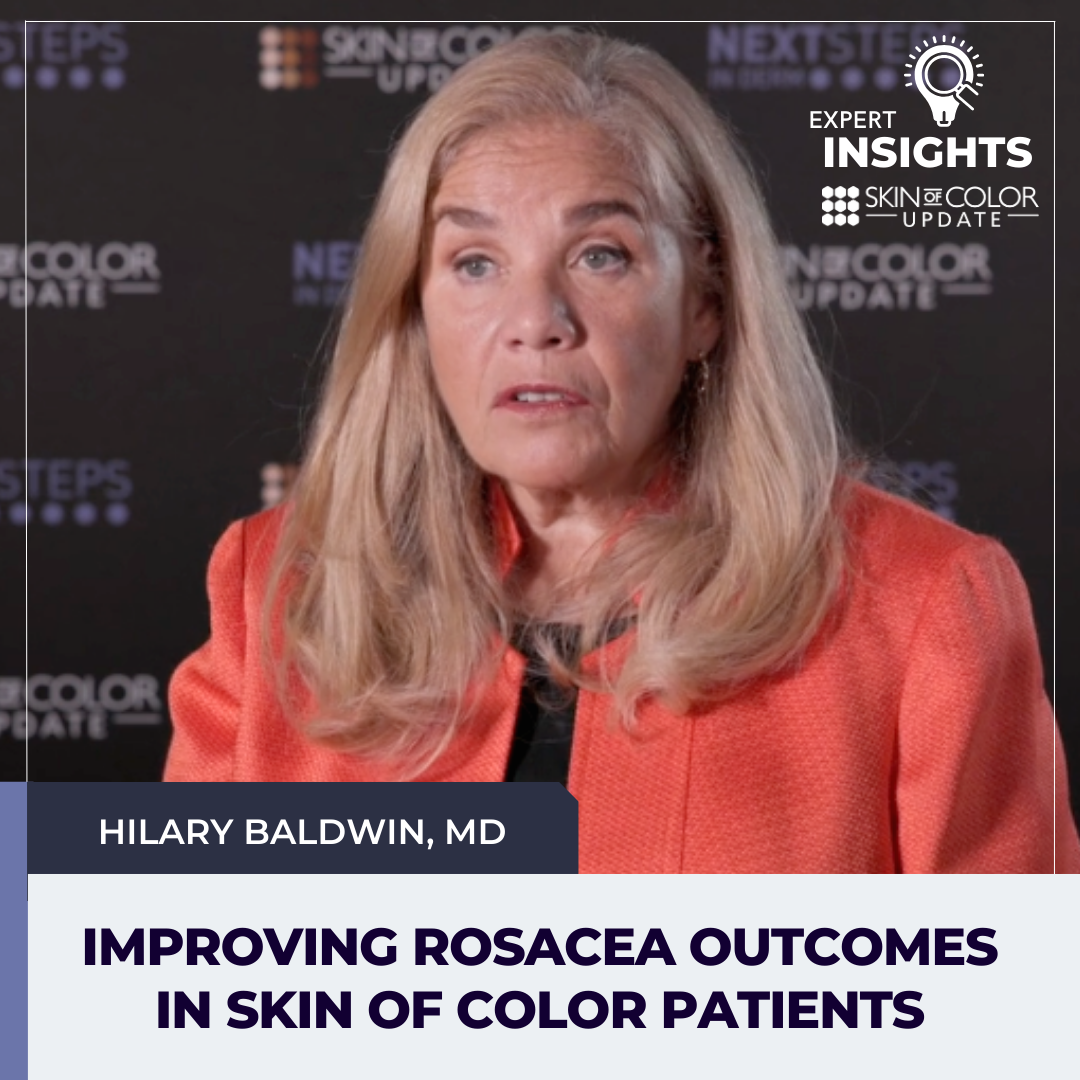Next Steps in Derm, in partnership with Skin of Color Update, interviewed Dr. Hilary Baldwin, a board-certified dermatologist and medical director of the Acne Treatment & Research Center in Morristown, N.J. and Brooklyn, N.Y. Diagnosing rosacea in patients with skin of color can be a learning experience as the disease may be more challenging to recognize in richly pigmented skin. Find out why Dr. Baldwin stresses symptoms over signs when diagnosing rosacea. Hear what medications offer high efficacy and good tolerability, and why oral medications may be particularly helpful in this patient population.
Further Reading
If you want to read more about rosacea in patients with skin of color, check out the following articles published in the Journal of Drugs in Dermatology:
ABSTRACT
Background: Rosacea is primarily an inflammatory disease of facial skin associated with impaired skin barrier function. While it is commonly thought of as a Caucasian person’s disease, it is likely underdiagnosed in people of color, including Asians, leading to missed and delayed diagnoses and increased morbidity. The purpose of this review is to highlight literature on rosacea in Asian people and the role of non-prescription skincare in managing rosacea.
Methods: Four dermatologists (the panel) completed pre-meeting surveys and participated in a web meeting to discuss the role of skin care in treating rosacea in the Asia Pacific (APAC) region. The survey results were summarized, then presented during the virtual meeting. These survey results and relevant papers identified through a literature review were then discussed. This review shows the fruit of these discussions, as well as the advisors’ expert opinions and experiences.
Results: The panel crafted 5 consensus statements regarding the role of skin care in the treatment of rosacea in the APAC region. The most common forms of rosacea seen by the advisors are mostly erythematous and papulopustular. Among the panel, doxycycline is the most popular treatment for papulopustular rosacea. The panel prioritize gentleness when choosing skincare products for patients with rosacea.
Conclusions: In Asian patients with rosacea, adjunctive skincare is an important part of treatment, maintenance, and prescription treatment. Given the highly sensitive skin of certain Asian patients with rosacea, avoiding potentially irritating substances is crucial.
ABSTRACT
Background: Rosacea is an inflammatory dermatosis with at least a ten percent prevalence reported among white adults. Rosacea occurs in nonwhite populations, but prevalence data is limited.
Methods: Five dermatologists from Latin America (the panel) met virtually after completing a survey of their prescription and adjunctive therapy practices when managing Latin American patients with rosacea. Panel members were chosen based on their dermatology expertise in treating a range of skin phototypes. Survey results were reviewed and discussed, along with a review of published guidelines for rosacea treatment.
Results: The panel addressed diagnostic challenges in richly pigmented skin individuals. Pathophysiology and treatment of rosacea were reviewed, with a primary focus on how to treat the skin barrier dysfunction in those affected, using prescription and over-the-counter measures.
Conclusions: Appropriate skincare is crucial for effective rosacea management. Cleansers and moisturizers with ingredients such as ceramides, hyaluronic acid, and niacinamide promote a healthy skin barrier, improving rosacea control.
Did you enjoy this video interview? Find more here.

